Gone are the days when I bought winkies by the hundreds and hoped my expired student ID would score me a discount at my local tanning bed salon. I’ve got a new solution for that awkward time of year where my legs are exposed for the first time and I’m like, Wow. It’s been a long winter. Lol.
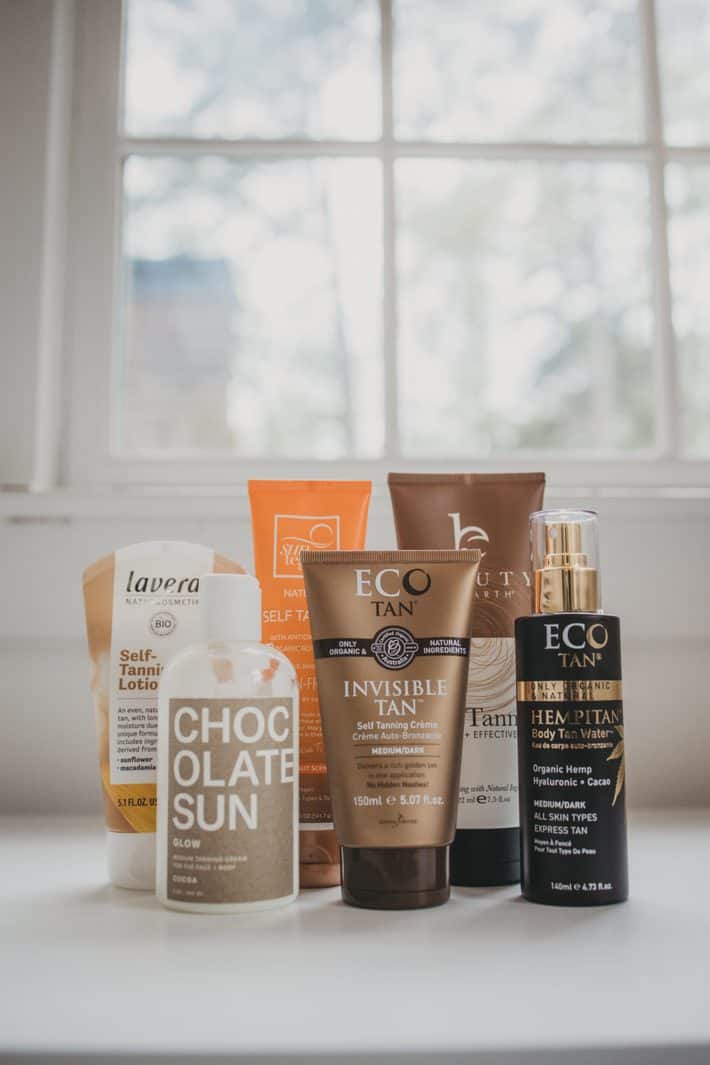
Whether you are looking for a sunless tanner to bridge the gap between those awkward moments (like me), you use sunless tanning lotion on the regs or you are curious about giving it a try, we’ve done the legwork (ha), research and testing, and have narrowed it down to our top three healthiest sunless tanning product picks for your body in this post. We have reviewed the best self tanner for your face in this post.
In this article:
- What to consider when buying a sunless tanner
- Ingredients to consider
- Ingredients to celebrate
- What are the healthiest sunless tanners?
- Our top three sunless tanning product picks
- Best budget pick
- Pro application tips
- FAQ
RELATED: The best nontoxic tinted SPF for everyday wear, the best eco friendly SPFs and the best mineral body SPFs.
What to consider when buying a sunless tanner
The main things to consider when buying a natural sunless tanner are 1) does it work and 2) are the ingredients healthy?
As a child of the 80s, I also had several personal questions (borderline fears) about testing natural sunless tanners too, like:
- Will it turn my skin orange?
- Will it stain clothes and sheets?
- What does it smell like?
- How long does it take to work?
- Does it streak? Or turn hands orange?
- Does it hydrate or dry out the skin?
Let’s talk ingredients first (or, you can skip to which ones work the best where we dive into the experience + deets for each pick).
Ingredients to consider: DHA
The main consideration in sunless tanners also happens to be the active ingredient: DHA.
What is DHA?
Molecular Biologist and Cosmetic Chemist, Kate Noonan explains, “DHA is made from the acetic acid bacteria fermentation of glycerol (glycerin). It temporarily tans/colors skin by staining dead skin cells called corneocytes in the outer layer of skin. The reaction of dead skin cell amino acids with DHA sugar produces pigments we call melanoidins. The melanoidins are shed with the dead skin cells in a process called desquamation.”
DHA is resistant to normal water, soap and sweat exposure and this effect generally lasts 3-7 days (1), which we also found to be true via testing.
Longterm effects of DHA use…
While self-tanning is generally considered safe, there are a few things to consider when using DHA. First, there have been few DHA safety studies and this Harvard article concludes that long-term effects remain largely unknown.
That being said, one study found that DHA damaged skin cells’ DNA, which suggests that more research is needed before DHA can be declared safe for long-term use. DHA is currently [FDA] approved for external use only, excluding the lips, eyes, ears, nose and mucous membranes.
Percentage of DHA used in formulas…
Second, consumers need to consider the percentage of DHA in a formula.
DHA concentrations can range from 1-15% (1). That’s a HUGE range. The higher the percentage, the more intense the coloration. The percentage is important to consider because topical DHA in levels of 5% or greater have been shown to increase susceptibility to free-radical damage from sunlight for 24 hours after application (2).
But the problem is, you won’t find percentage information on product labels and asking for percentages from brands gets tricky because it can sometimes be what makes a formula, THE formula. It’s what founders have worked to develop sometimes for years and they don’t just put all their blood, sweat and tears on front street like that.
So how do we interpret this? We did find the ECOCERT (our gold star standard) DHA spec sheet with formulation recommendations for ‘tanning cream,’ which they recommend keeping to a 5% concentration—but this is only a helpful guide if brands will disclose their DHA concentration.
There are some ways around this. You could ask a brand if they follow ECOCERT recommendations when using DHA or you could ask for a percentage range. We contacted the brands listed below and most were willing to share DHA percentages in ranges.
Naturally derived DHA…
The other thing to consider when it comes to DHA is language like “naturally derived” DHA. We’ve all seen the lingo like, “natural DHA made from sugar beets.”
I don’t want to blow this up and call it greenwashing but…it could be interpreted that way. We did a lot of digging on this one because we wanted to find out what the difference is between “naturally derived DHA” and…non naturally derived (?) DHA and if they impacted the skin in different ways.
Kate Noonan, our resident cosmetic chemist, called around to most of the DHA suppliers and turns out there are currently five sources of glycerol used in the microbial fermentation process to yield DHA: sugarcane, sugar beet, African red palm, coconut and corn.
Glycerol can also be made from animal fats but Kate confirms that “I’ve been informed that no company is using animal fat to make the glycerol for DHA production. And glycerol (glycerin) production from petroleum [used to be a thing but] has been phased out.”
Read: All DHA can be considered “naturally-derived.”
Not a huge deal, but I don’t want you to get tricked into thinking you are choosing a DHA that is better for you if you are choosing a DHA made from sugar beets.
That being said, there is still a tool to use and a choice to be made here. When a brand uses DHA that is certified ECOCERT, we are ensured as consumers that the plant the DHA was sourced from (sugarcane, sugar beet, African red palm, coconut and corn) was grown organically and doesn’t have pesticide contamination.
Additionally, Kate adds, “Some non-ECOCERT DHA comes pre-mixed with Sodium Metabisulfite. This type of DHA comes with a warning that you shouldn’t use this DHA blend in a product above 4-6%, but it may end up being formulated at 10% in a product if a company doesn’t pay attention to one of the documents.”
DHA + sunscreen = ✅
Lastly, sometimes when people use self tanner, they get tricked into thinking that they are actually tan—and they forgo sunscreen altogether. Don’t be that girl.
With UV exposure on DHA-treated skin, over 180% more free radicals can be generated without the use of sunscreen (3). (This can mean attacks on cell structures, collagen and elastin fibers degradation, premature skin aging and wrinkle formation [4].)
SO! If you use a sunless tanner, you have to be vigilant about SPF. This means consistently applying throughout the day or avoiding long stretches of sun exposure in general.
More ingredients to consider…
Outside of DHA, you want to check and see if there are any synthetic fragrances being added. The chemical reaction that takes place on the skin when using a self tanner can create an unpleasant odor and some brands will try and mask the smell with an added fragrance. Fragrance can contain thousands of components, some of which can be harmful like plasticizers that can cause birth defects and endocrine disruption.
In addition, we recommend looking for ECOCERT-approved preservatives like sodium benzoate or potassium sorbate over others like parabens, which can cause rosacea and allergic contact dermatitis in some users (5) and have been shown to be weak estrogens (6).
Some additional ingredients to consider are:
- Phenoxyethanol: Cosmetic grade phenoxyethanol regularly has too high of a concentration of unreacted phenol (carbolic acid) for use in baby products, because babies are sensitive to its neurotoxicity (7) in much smaller amounts than adults. The EU requires that all phenoxyethanol is pharmaceutical grade with less than 10ppm phenol under EC 1223/2009 and 1% phenoxyethanol per product, but the US does not require this. Phenoxyethanol also has residual ethylene oxide and phenol from manufacturing and both aren’t totally removed.
- FD&C Dyes like Yellow 5, Blue 1 and Red 4: These colors, originally derived from coal tar and now petroleum (8), have been linked to cancer (8), neurotoxicity (9), genotoxicity (9) and concerns with long-term safety (10). Most dyes, including Yellow 5, have been banned in Europe (11).
- Polysorbates and PEGs: Adding carcinogens 1,4-dioxane (12) and ethylene oxide (13) to fatty alcohols turns them into emulsifiers or surfactants. Since these carcinogens readily absorb into the body through skin, Canada, Qatar and NY State have banned cosmetics containing them (14).
- Propylene glycol: Used for its skin penetration effects, but consequently also works against the skin by increasing transepidermal water loss and weakening the skin barrier (15).
Takeaway: If you are using a sunless tanner, check your labels and be sure to also use SPF when you are out and about.
Ingredients to celebrate
Because you don’t want to apply a moisturizer before you apply a self tanner, it’s nice to see self tanners that act like skincare too.
I personally love seeing ingredients like aloe leaf juice as a sub for water. I also love seeing nourishing oils incorporated like macadamia seed oil, avocado oil, jojoba, argan or coconut oil, which condition and help lock in moisture.
It’s an added bonus when we see natural soothing extracts like calendula flower extract or marshmallow extract.
But my favorite thing to look for is natural antioxidants like green tea leaf extract, pomegranate extract and tocopherol, which can help counteract some of the free-radical damage as well.
RELATED: The best hair sunscreens.
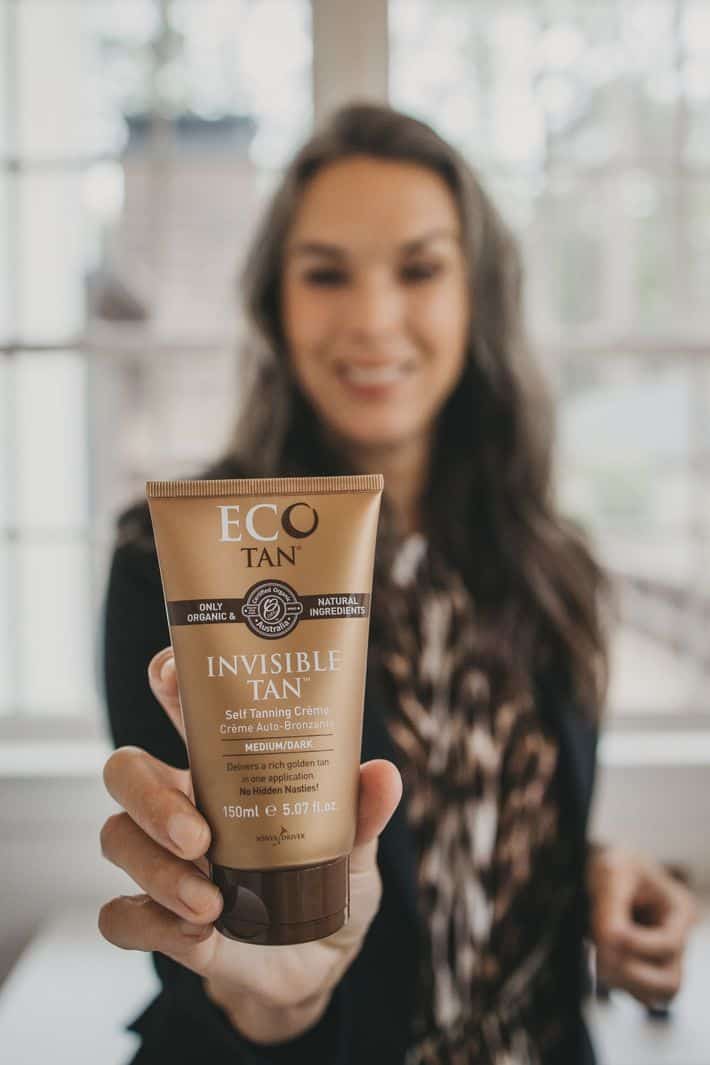
What are the healthiest self tanners?
Taking all of that into account, we researched the market, looked at a ton of self tanners and then selected the healthiest self tanners to test. Our sample set included:
- Suntegrity Natural Self Tanner
- Beauty By Earth Self Tanner
- Eco Tan Hempitan Body Tan Water, Winter Skin and Invisible Tan
- Chocolate Sun Enhance Tanner Cream
- Lavera Self Tanning Lotion
- Zuii Organics
Both Nicolle and I tested all of these so we are weighing in with more than one opinion here and the results were unanimous!
As a side note, there was one additional formula we wanted to test and it’s Kora Organics Gradual Self-Tanning Lotion, which also looked amazing as far as ingredients go.
Lastly, we did not test any face self-tanners. (Not sure I’m ready to invite more free radical generation to my face—though we have tested Maya Chia’s WATER | COLOR Tinted Hydrating Super Antioxidant Skincare + Gradual Sunless Tanner and you can see before and afters here.) These are all self-tanners for the body.
And if you are looking for a good hair SPF (yes, it’s a thing), we’ve rounded up the best ones here.
The best natural sunless tanning lotions
Best sunless tanning water: Eco Tan Hempitan Body Tan Water | $39.95
Not only did Eco Tan claim top spot, but it was also hard to choose which Eco Tan product we liked better: Invisible Tan (cream) or Hempitan Body Tan Water (liquid), so we are listing both here. We also tried the Winter Skin (cream), but that’s not our top pick.
Eco Tan first caught our eye as this formula is made with 80% certified organic ingredients. #HALLA!
Both Nicolle and I tried this formula and we both preferred the medium/dark which delivered a better color payoff with just one application. Eco Tan instantly quelled all my fears about having orange limbs. Super impressed with the color here. It’s SO NATURAL-looking and truly is your own skin color—just a hair tanner.
I mean if, I’m being honest, one use of Eco Tan and I’m a sunless tanning convert.
Nicolle feels the same way. “I went to a physical therapy appointment and my PT thought I’d been wearing capris and just had a wicked tan line—that’s how natural it looks in person! And I’m a light-neutral skin tone, so that was surprising.”
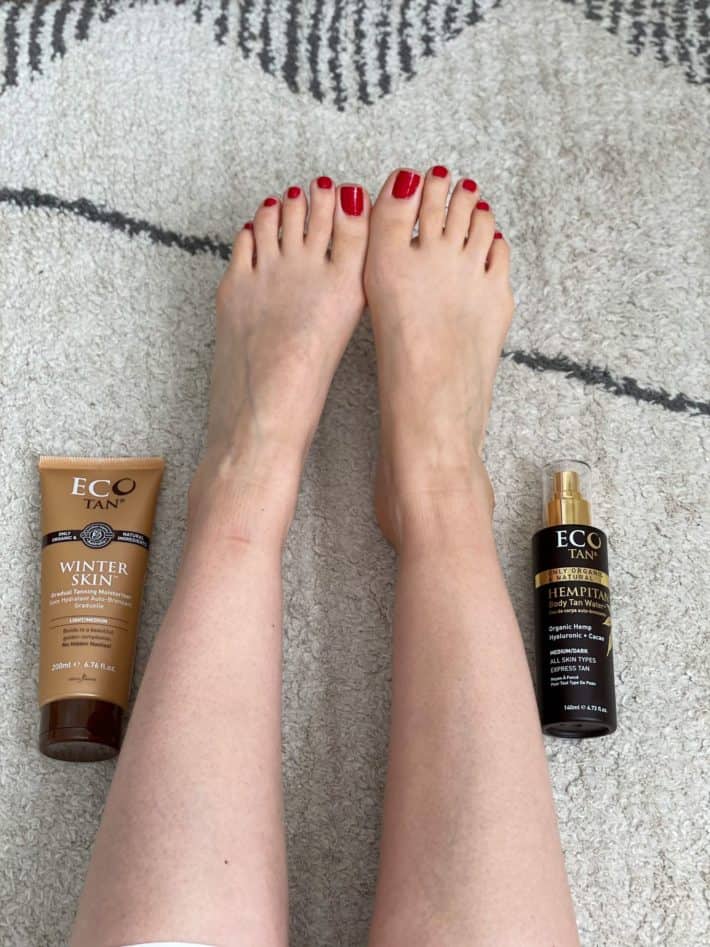
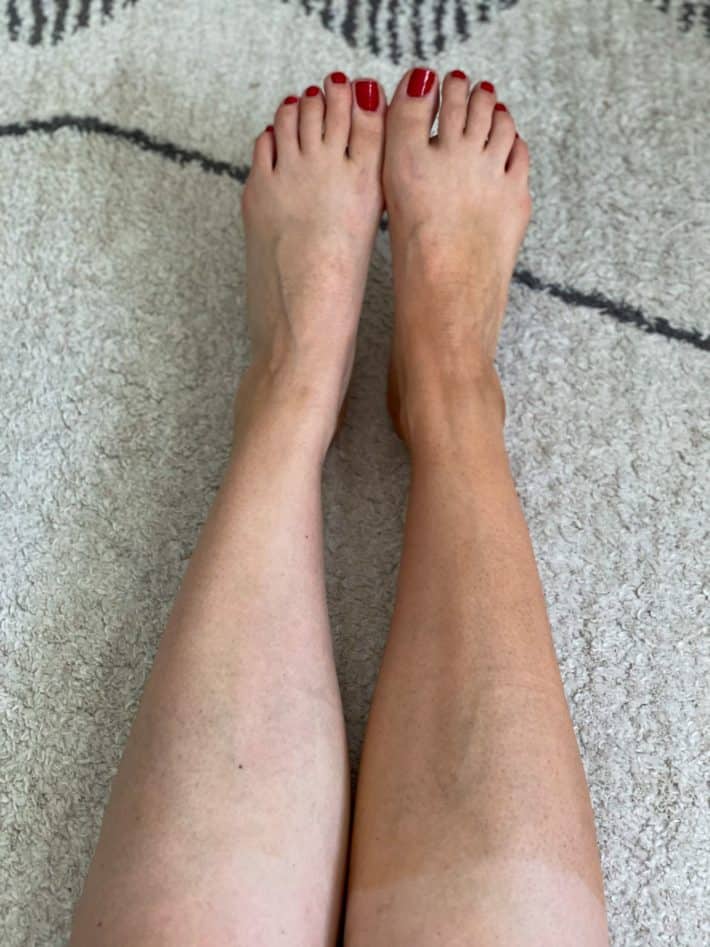
Less is more when it comes to ingredients here. When it comes to the Hempitan Body Tan Water, we are relishing the addition of cocoa powder as an antioxidant and organic hemp seed for some anti-inflammatory action. And in the Invisible Tan, love the added moisturizing benefit from nourishing oils like avocado oil and macadamia seed oil.
Eco Tan was able to confirm they formulate in a range of 4-8% DHA (depending on the product). We can assume that the medium/dark formulas are on the higher end of this spectrum while the light/medium formulas are on the lower end.
Pros and cons of Eco Tan:
- Soaks right in.
- Gave a more noticeable effect on Nicolle who has lighter skin than me. (See above photos.)
- Cream pumps out white. Water is clear with a tinge of yellow.
- Loved that the water was so easy to use, but also loved the cream for added moisture.
- Applies evenly and easily.
- Comes in a limited number of shades.
- The scent was unremarkable. Like, we barely remember it having a scent.
- Vegan.
- Made in Australia.
A formula made with 80% organic ingredients that deliver the best results in just one application. Gives the skin a natural look and it applies very easy on the skin.
Best sunless tanning cream: Beauty By Earth | $29.69
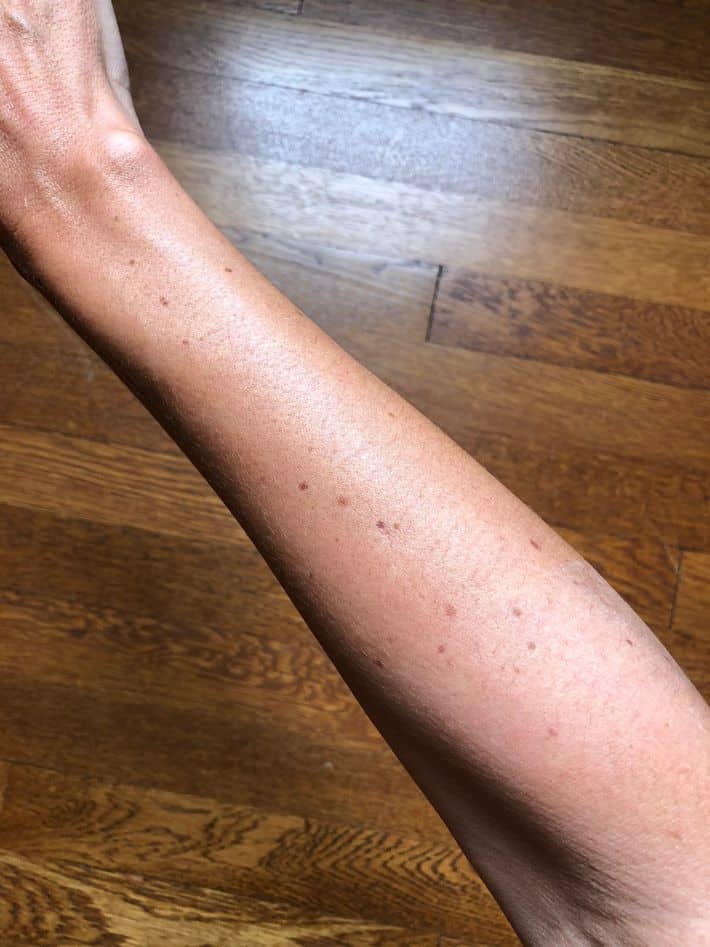
This is a cream formula with a base of aloe vera leaf juice. Love the addition of antioxidants like green tea leaf extract and pomegranate extract. This formula is also essential oil-free (scented with vanilla fruit extract), which can be a pro for some.
This cream pumps out white and took a tad longer to soak in than the other creams we tried but it gave the most noticeable (yet still subtle) effect out of all the brands we tested. Beauty By Earth was able to confirm they formulate within a range of 5-8% DHA.
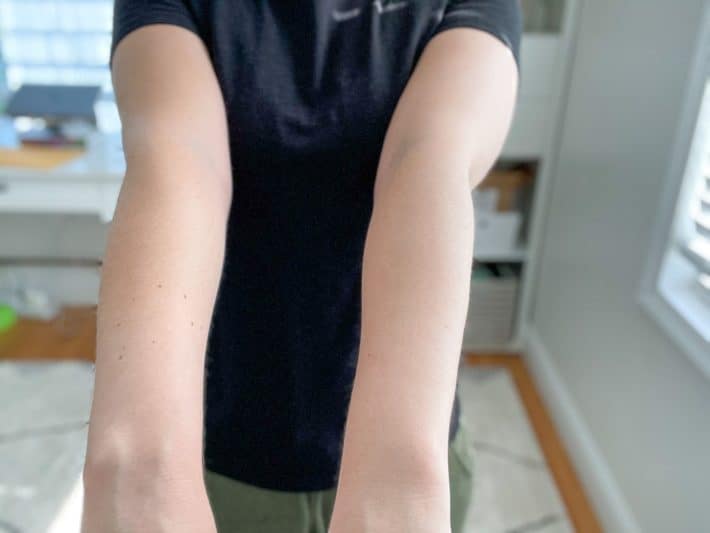
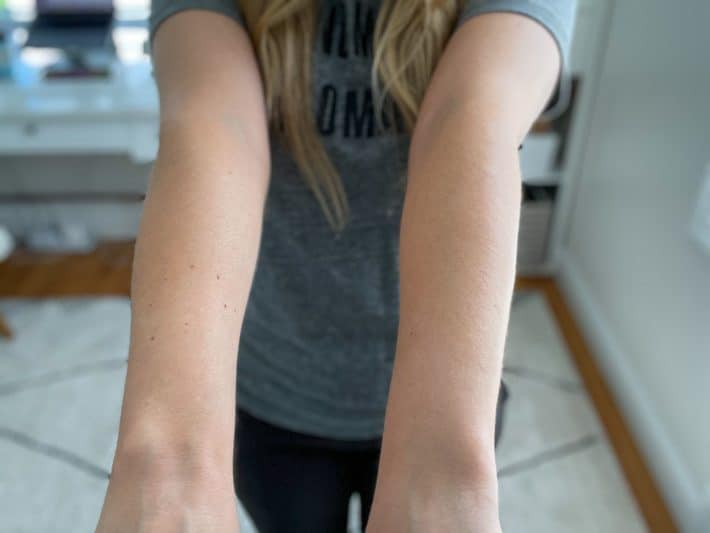
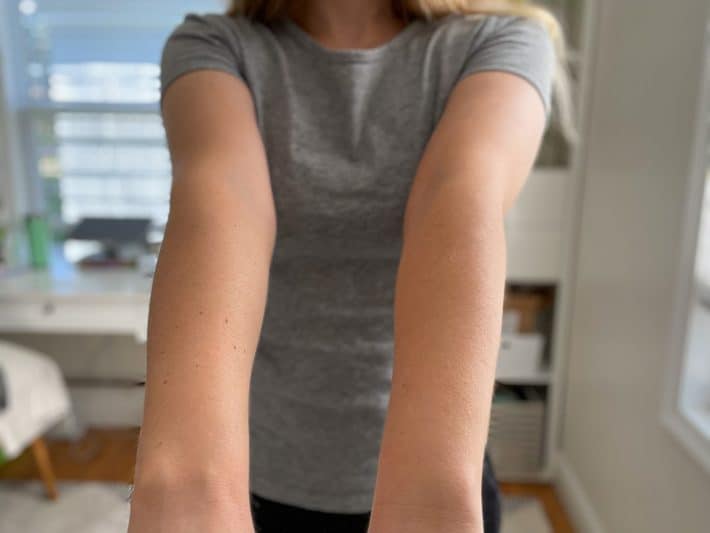
Pros and cons of Beauty By Earth Self Tanner:
- Took a little bit longer to soak in/is thicker than some of the others we tried.
- Gave a more noticeable effect the first go around.
- Pumps out white.
- Applies evenly.
- Only comes in one shade.
- Didn’t collect on dry spots or ankles/knees/elbows.
- No orangey tint.
- Could be layered for deeper color (see pics).
- No synthetic fragrance but it has a little bit of a baby powder smell to it. And the scent lasts longer than others.
- Vegan.
- Made in the USA.
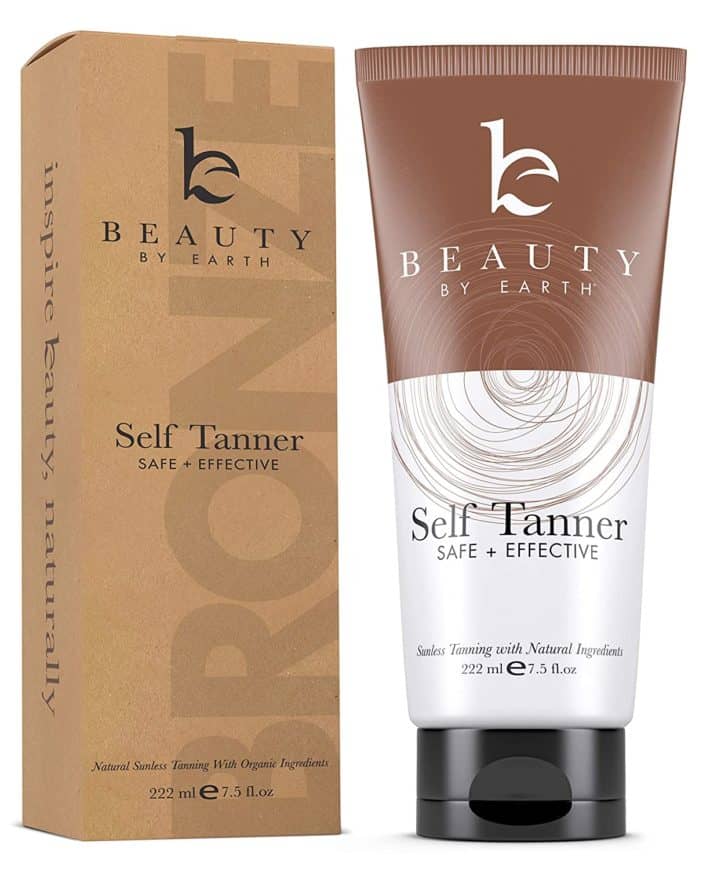
A creamy self-tanner with a natural fragrance that lasts a long time. It’s vegan and natural-looking!
Best sunless tanning foam AND best for darker skin tones: Zuii Organic Certified Organic Flora Self Tanning Foam | $35
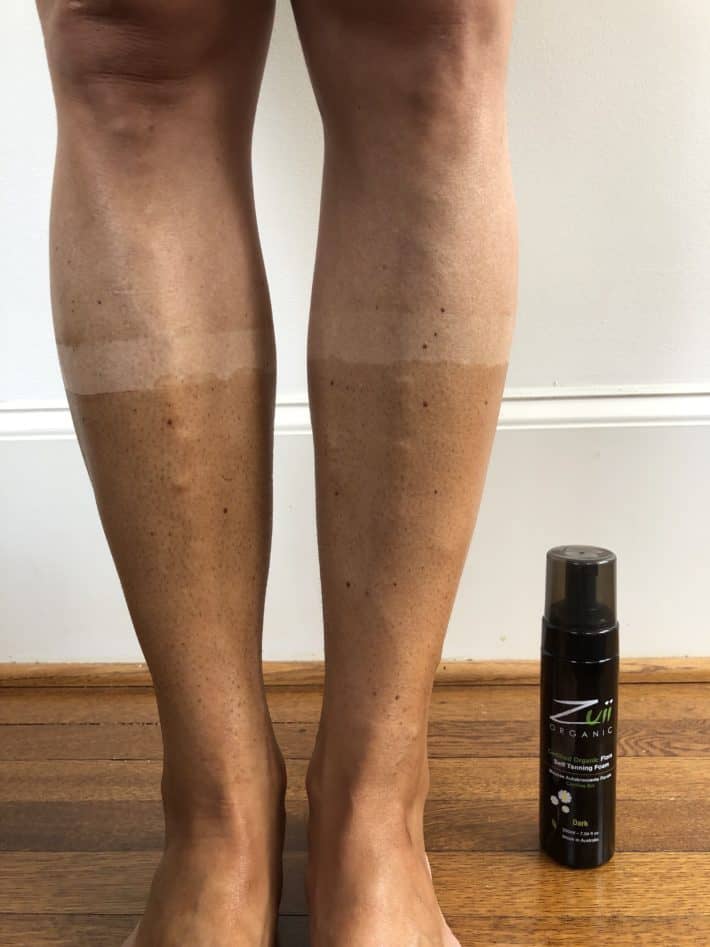
So excited to recommend this formula for a couple of reasons. First, it comes in four colors: light, medium, dark and ultra dark. This range was by far the most inclusive we found covering a wider range of skin tones. (I’m wearing Dark in the photo above, but Medium would probably be a better color match for me.)
Second, this formula is certified COSMOS Organic—one of the most stringent beauty certifications. That being said, it’s no surprise that we are seeing 94% organic ingredients in this Australian-made formula.
This also was the only formula that pumped out tinted. The Dark was a dark brown foam and it tinted skin immediately. No waiting game required here, BUT FYI, this formula continues to develop over the next few hours so I would advise waiting a day before reapplying.
The other benefit to using a tinted mousse is that you can actually SEE where the product is and where it is NOT. So, *theoretically* you can get a more even application compared to a clear cream or a non-tinted water for example.
Pros and cons of Zuii Organic Certified Organic Flora Self Tanning Foam:
- Pumps out tinted.
- Has a light cocoa scent.
- Works instantly and continues to develop over time.
- Rub into elbows, knees and joints first to insure even application.
- Multiple shade ranges.
- Certified COSMOS Organic.
- Does not dry out skin.
- Vegan.
- Made in Australia.
Zuii Organic Certified Organic Flora Self Tanning Foam
One of the most inclusive self-tanners we’ve tried. A great benefit of this mousse is that you can see where it is applied and where is not.
BONUS: Best sunless tanning pick for lighter skin tones: Lavera | $33
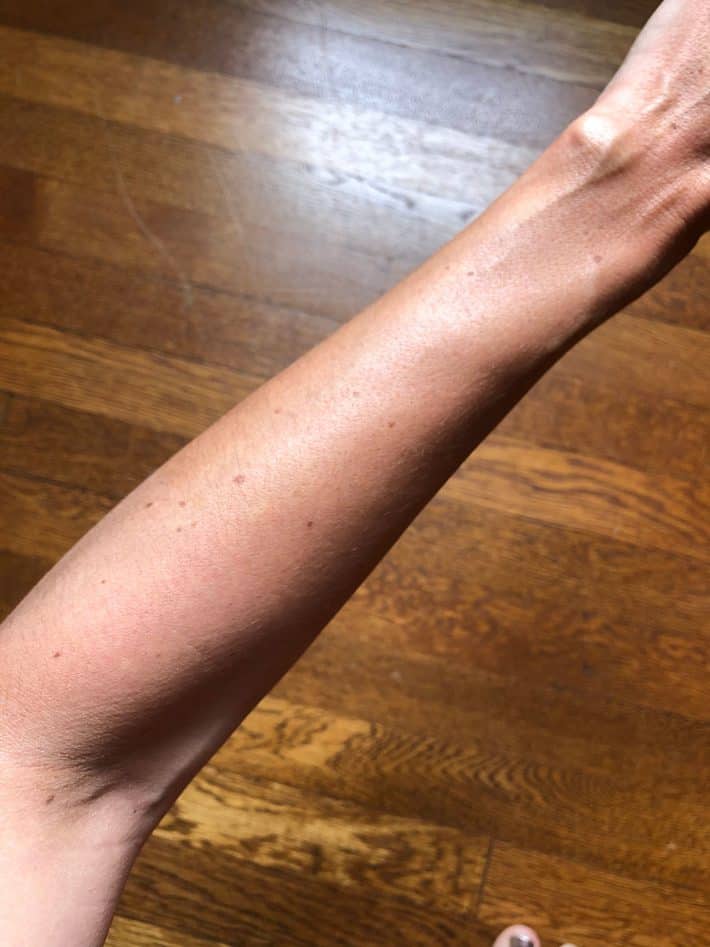
This cream formula from Lavera has been a long-standing option for sunless tanning. It used to come in at a much lower price point, and usually when a product is lower in price, it also means lower quality ingredients. For example, instead of aloe leaf juice, we see water as the base. And the first oil listed (ingredients are typically listed in order of volume) is soybean oil, compared to something more nourishing like avocado oil or shea. BUT, it’s also third-party certified via NATRUE and overall offers a healthy formula with little compromise.
We checked with the brand and the team couldn’t provide us with an exact percentage of DHA. From Lavera: “…it contains enough DHA to be effective in combination with the erythrulose [another sugar-derived compound that reacts with DHA to create the brown tone on skin].” Kate clarifies, “Erythrulose is a red-tinted sugar added to some tanning formulas that prevents the skin from turning orange.”
The effects here were very light. Nicolle’s skin is lighter than mine and she saw noticeable results with one application where I didn’t see much at all.
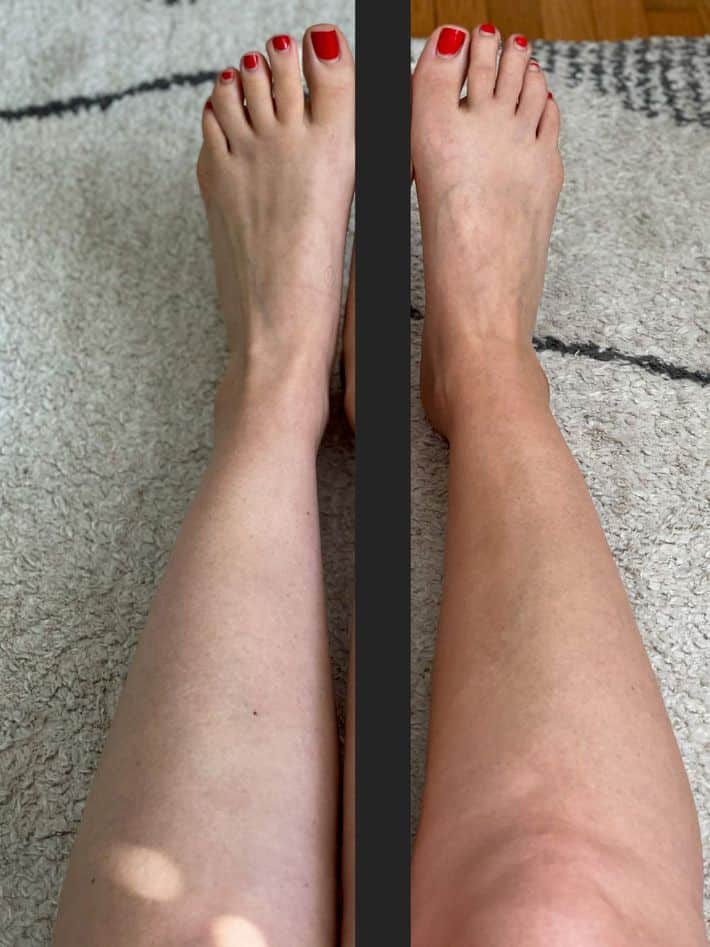
Pros and cons of Lavera Self Tanning Lotion:
- Soaks right in.
- Very light effect the first go around and may be a better pick for people with lighter skin.
- Pumps out white.
- Applies evenly.
- Very faint scent.
- Certified NATRUE.
- Vegan.
- Made in Germany.
Lavera Organic Self Tanning Lotion
A great option for lighter skin tones when looking for eco-friendly self-tanners. Certified NATRUE and vegan!
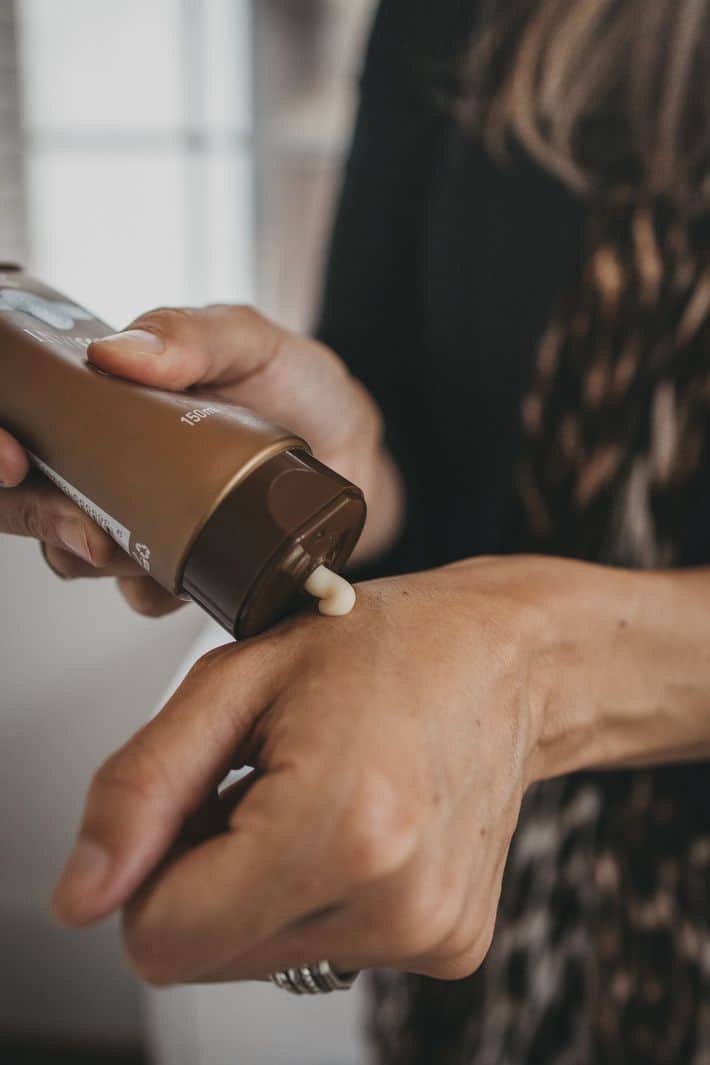
Pro application tips for sunless tanning products
- Exfoliate before applying for the smoothest possible application—a number of our recommended picks suggest exfoliating (aka shaving in some cases) 24-48 hours before applying. (Try our DIY homemade skincare body polish, recipe courtesy of LILFOX Founder Alexis Rose.)
- Do not moisturize right before applying self tanner.
- Apply in sections and in a circular motion to reduce streaking or overlap.
- Apply once for a subtle look or try applying in layers to achieve the look you want. (Wait a day between layers.)
- Dress in loose layers while you wait for the cream/lotion to dry.
- Avoid getting sweaty post-application, until the color appears—try applying in a cool, dry location if possible!
- After you self tan, it’s important to moisturize to keep skin hydrated and help the color last as long as possible. Apply a natural body lotion daily to keep the tan at its peak.
- Avoid exfoliating AFTER you apply—since exfoliating takes off a layer of skin, you’ll also be removing the tan color.
Sunless tanning FAQ
1. Exfoliate before applying for the smoothest possible application—a number of our recommended picks suggest exfoliating (aka shaving in some cases) 24-48 hours before applying. (Try our DIY homemade skincare body polish, recipe courtesy of LILFOX Founder Alexis Rose.)
2. Do not moisturize right before applying self tanner.
3. Apply in sections and in a circular motion to reduce streaking or overlap.
4. Apply once for a subtle look or try applying in layers to achieve the look you want. (Wait a day between layers).
5. Dress in loose layers while you wait for the cream/lotion to dry.
6. Avoid getting sweaty post-application, until the color appears—try applying in a cool, dry location if possible!
7. After you self tan, it’s important to moisturize to keep skin hydrated and help the color last as long as possible.
8. Avoid exfoliating AFTER you apply—since exfoliating takes off a layer of skin, you’ll also be removing the tan color.
Learn more here.
Eco Tan is the best self tanner for pale skin (and medium shades as well). We like both their Invisible Tan (cream) and Hempitan Body Tan Water (liquid). Learn more here.
While self-tanning is generally considered safe, there are a few things to consider when using DHA. First, there have been few DHA safety studies and this Harvard article concludes that long-term effects remain largely unknown. That being said, one study found that DHA damaged skin cells’ DNA, which suggests that more research is needed before DHA can be declared safe for long-term use. DHA is currently [FDA] approved for external use only, excluding the lips, eyes, ears, nose and mucous membranes. Learn more here.
Self tanners use DHA. Molecular Biologist and Cosmetic Chemist, Kate Noonan explains, “DHA is made from the acetic acid bacteria fermentation of glycerol (glycerin). It temporarily tans/colors skin by staining dead skin cells called corneocytes in the outer layer of skin. The reaction of dead skin cell amino acids with DHA sugar produces pigments we call melanoidins. The melanoidins are shed with the dead skin cells in a process called desquamation.” DHA is resistant to normal water, soap and sweat exposure and this effect generally lasts 3-7 days (1), which we also found to be true via testing. Learn more about the best self tanners here.
Meanwhile, I’ll be walking around with my half tested limbs for the next week 😂. What sunless tanning products have you tried and loved?
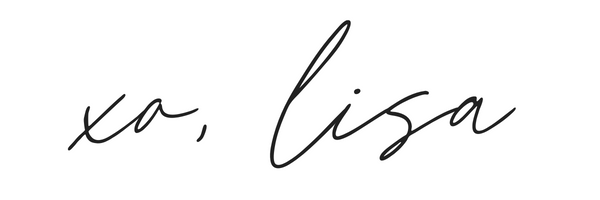
TNK Team Note: This article may contain affiliate links, including Amazon affiliate links. As an Amazon Associate, we earn from qualifying purchases. TNK uses affiliate links as a source for revenue to fund operations of the business and to be less dependent on branded content. TNK stands behind all product recommendations. Still have questions about these links or our process? Feel free to email us.
REFERENCES:
1. Michael Garone, Jr., DO; John Howard, DO; Jordan Fabrikant, DO; Largo Medical Center, Largo, Florida; Broward Health Medical Center, Ft. Lauderdale, Florida; Larkin Hospital, Miami, Florida; A Review of Common Tanning Methods; Journal of Clinical and Aesthetic Medicine, February 1st, 2015;
2. Jung K, Seifert M, Herrling Th, Fuchs J. UV-generated free radicals (FR) in skin: their prevention by sunscreens and their induction by self-tanning agents. Spectrochim Acta A Mol Biomol Spectrosc. 2008;69(5):1423–1428
3. Jung, K..; Seifert, M..; Herrling, Th.; Fuchs, J.; Gematria Test Lab, Berlin, Germany; University of Applied Sciences TFH, Berlin, Germany; J.W.v. Goethe University, Frankfurt/M, Germany; UV-generated free radicals (FR) in skin: Their prevention by sunscreens and their induction by self-tanning agents; Spectrochimica Acta Part A: Molecular and Biomolecular Spectroscopy, May 2008;
4. Dr. Rosaria Ciriminna; Dr. Alexandra Fidalgo; Prof. Laura M. Ilharco; Dr. Mario Pagliaro; Chemistry Open, March 2018; Dihydroxyacetone: An Updated Insight into an Important Bioproduct.
5. Nagel JE, Fuscaldo JT, Fireman P. Paraben allergy. JAMA. 1977;237(15):1594–1595. [PubMed] [Google Scholar].
6. Byford JR, Shaw LE, Drew MG, et al. Oestrogenic activity of parabens in MCF7 human breast cancer cells. J Steroid Biochem Mol Biol. 2002;80(1):49–60.
7. D’Souza, Ryan S.; Warner, Nafisseh; Phenol Nerve Block; StatPearls, September 2020.
8. Kobylewski, Sarah; Jacobson, Michael F; Toxicology of food dyes; International Journal of Occupational and Environmental Health July 2012.
9. Taylor, S.L.; Baumert, J.L.; Encyclopedia of Agriculture and Food Systems, 2014; Tartrazine.
10. Nomination background D &C red no. 27 [CASRN 13473-26-2], D&C Red No. 28 [CASRN 18472-87-2]; National Institutes of Health, October 2000.
11. Food dyes; Center of Science in the Public Interest, 2008.
12. California Office of Environmental Health Hazard Assessment; 1,4-Dioxane.
13. California Office of Environmental Health Hazard Assessment; Ethylene Oxide.
14. Gooma, Rania; ResearchGate, November 2016; A study of potential cytotoxic effect of 1,4 dioxane on human hepatic cell line (HEP10).
15. Hagu, Tasnuva; Talukder, Mesbah Uddin, Md; Advanced Pharmaceutical Bulletin, June 2018; Chemical Enhancer: A Simplistic Way to Modulate Barrier Function of the Stratum Corneum.

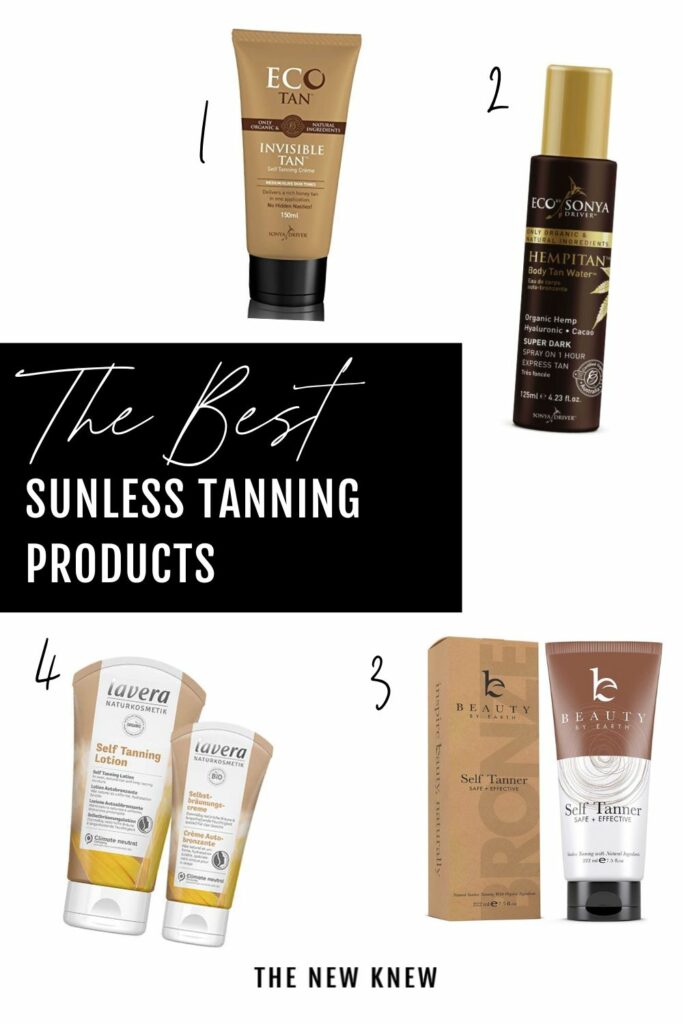
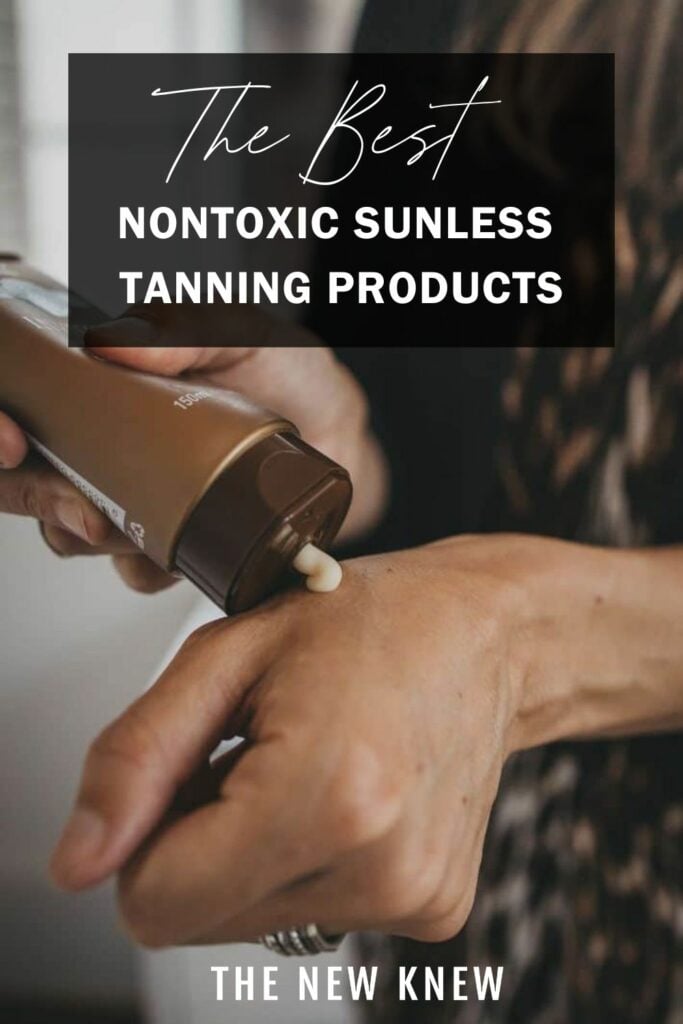
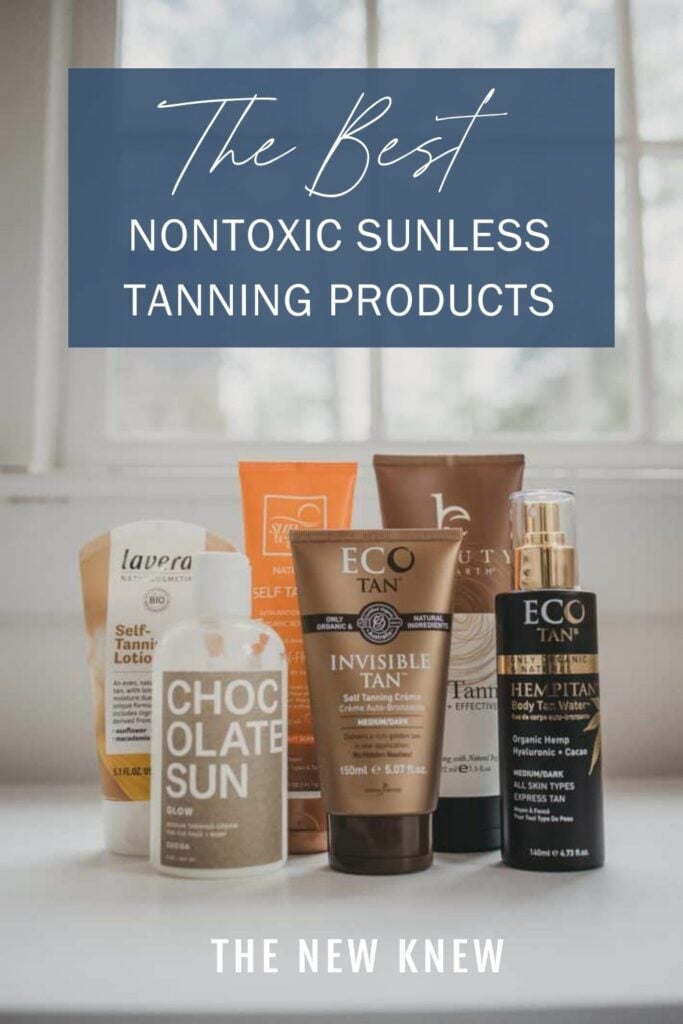
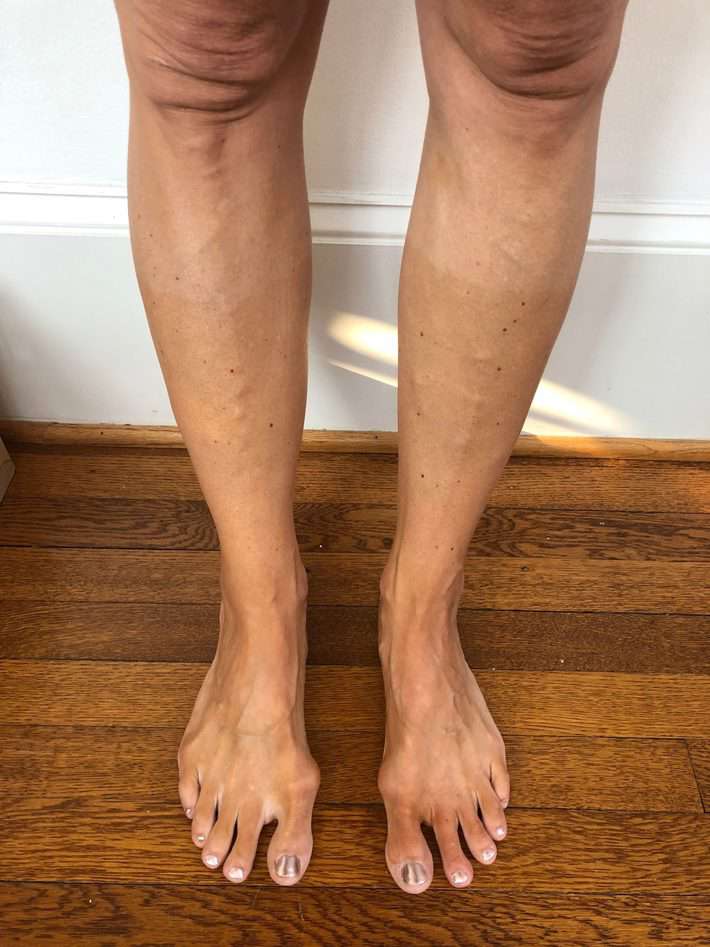
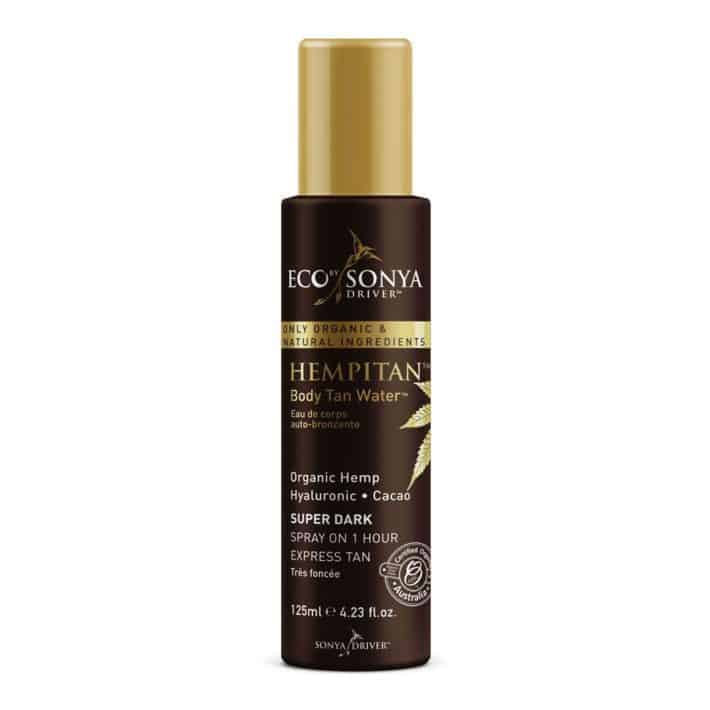
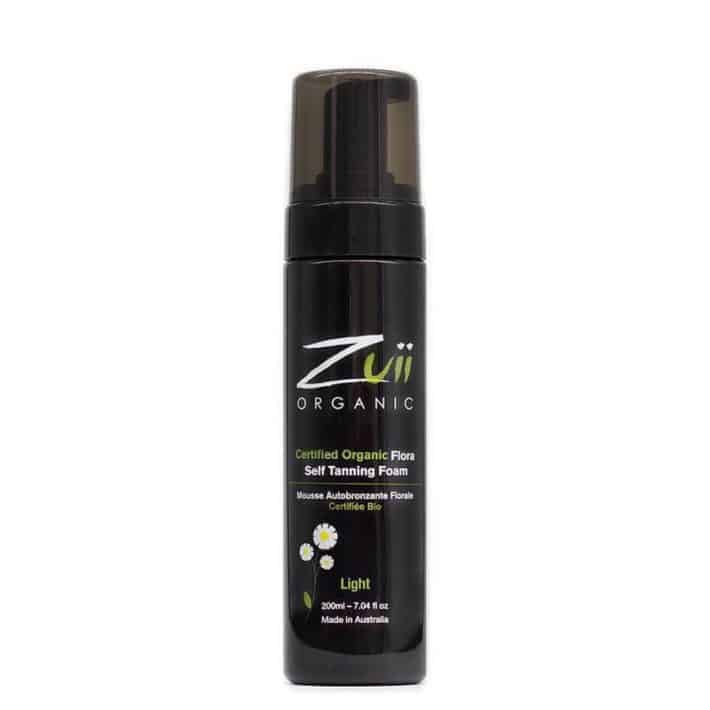
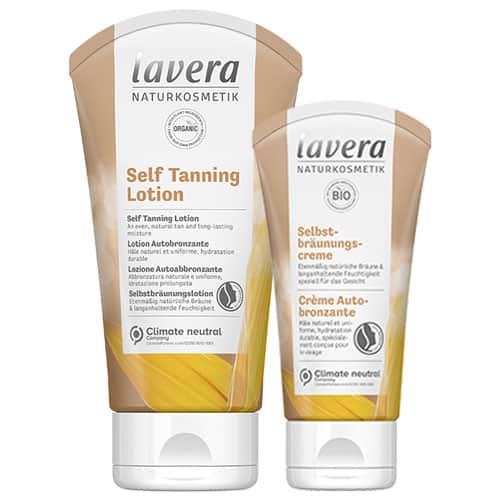
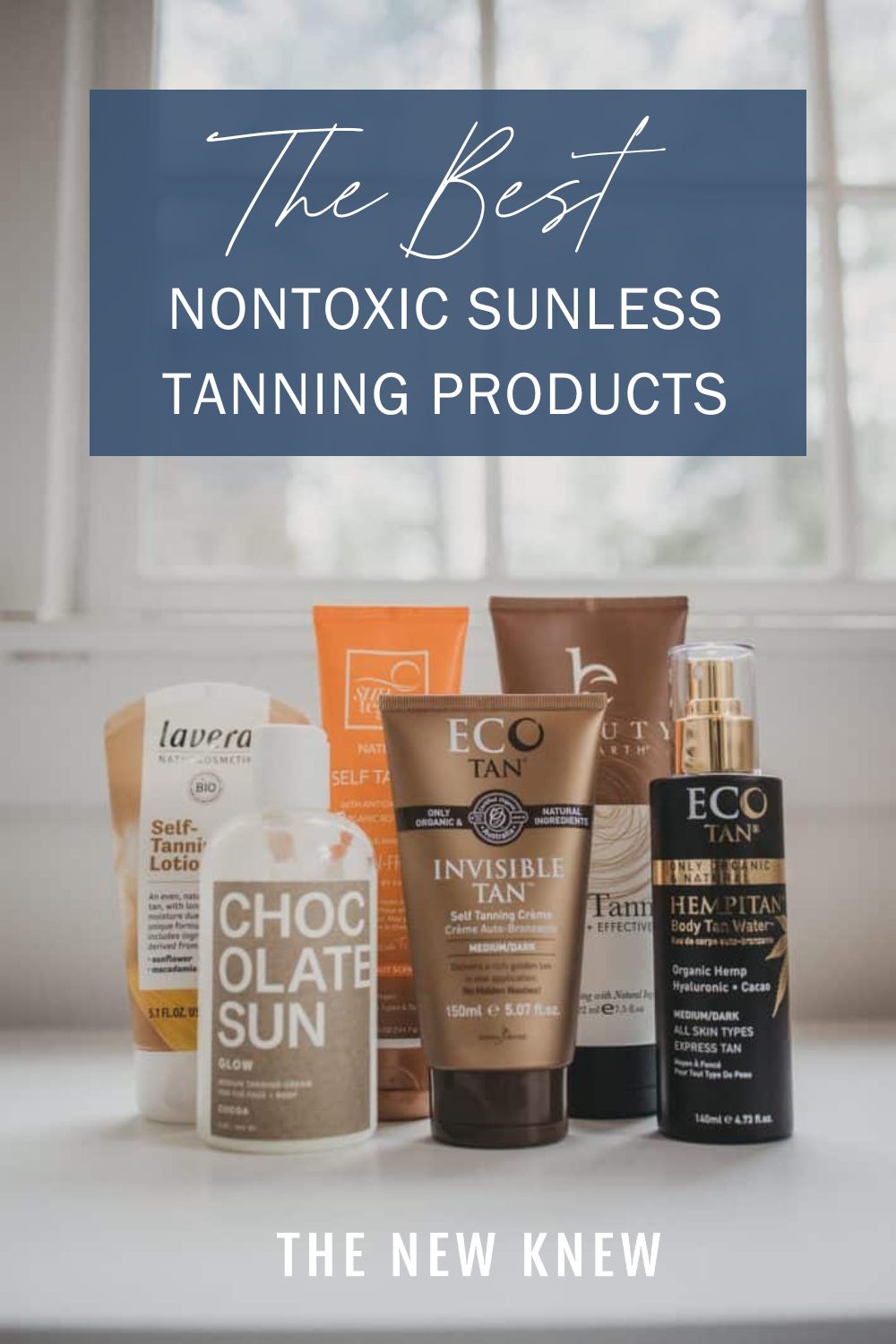
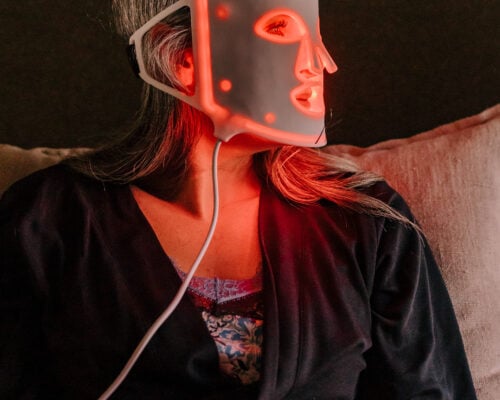
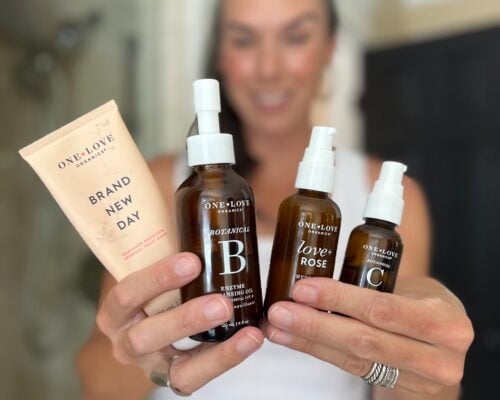
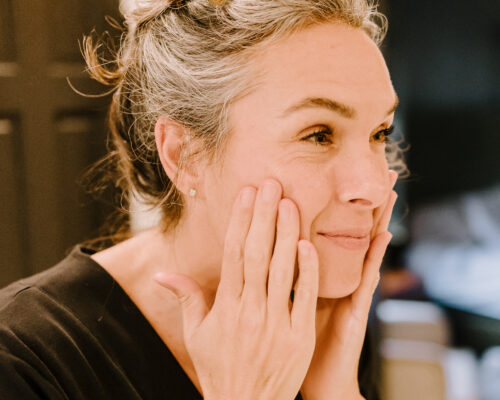
Susana
June 3, 2021What were your thoughts on the suntegrity?
Lisa
June 24, 2021Hi Susana! That brand oxidized a little too much for us and left kind of an orange tinge…Have you tried it? xo, Lisa
Mimi
June 4, 2021Did any have less of that lingering self-tanner smell? My family complains lol
Lisa
June 24, 2021Hi Mimi! That was one of my fears too like NO THANKS! But believe it or not, none of these top picks smelled like conventional self tanner which was so refreshing! Did you end up trying any? xo, Lisa
Kerry
March 3, 2022Chocolate Sun a no go-“greenwashing” one? Also, any one of these better at not staining sheets? I typically use a self tanner before bed use a black sheet but I still see staining afterwards. Thank you
Lisa Fennessy
April 10, 2022Hi Kerry! Chocolate Sun was fine, it just wasn’t our fave. And we didn’t see any sheet staining with these recs! If it happens to you, let us know but that was not our experience. xo, L
Kerry Bastoni
April 11, 2022Thank you for getting back to me. I got the Zuii foam for my next vacation. After rethinking it since I only pack carry on-I also got the Ecotan lotion (easier to pack) So I guess I have to 2 best to try.😉 Thank you again.
Barbara Restaino
February 17, 2023Any suggestions on bronzing creams/lotions? I break out using any product containing DHA. Thanks!
Lisa Fennessy
February 24, 2023Hi Barbara! Check out Kinu by H is for Love which helps glow up skin by adding a little shimmer. ATHR has something similar too. Both of these use shimmer/mica to achieve a glowey look. Since DHA is the active ingredient in self tanners, it will be hard to find a comp without DHA that preforms the same way.
Dana
February 19, 2023Any favorite face tan drops? 🙂
Thanks!
Nicolle Mackinnon
February 27, 2023Hi Dana! Love hearing your gray hair story – I bet your hair looks great! I kinda use a few different things for hair styling, and I switch it up often, but these are my ride or die:
Shampoo: EVOLVh Ultra Shine Moisture Shampoo
Conditioner: Andalou Naturals Argan Stem Cell Conditioner
Styling: EVOLVh’s WonderBalm or TotalControl Styling Creme.
Volumizing: Innersense I Create Hold
When I want to wear my hair curly (mostly in the summer): Boucleme Curl Defining Gel
Hairspray (not 100% clean and it’s an aerosol…): Aiir Professional Flexible Control Aiir Spray
Hair oil: I Create Shine from Innersense
LMK if you want any additional recs! 🙂
Barbara Restaino
February 24, 2023Thanks! I’ll look into these options!